VERSION EN ESPAÑOL
Hola amigos de esta comunidad en la que vuelvo por segunda vez atraído por la posibilidad de disertar o teorizar sobre el arte.
Se que no es lo mismo relatar sobre un proceso creativo paso por paso de una obra, que expresar opiniones o criterios sobre una obra en específico. Son dos cosas muy diferentes, y cada una con sus propias peculiaridades.
Sin dilatar demasiado el motivo que me trae hoy, les confieso que es un verdadero reto entrar a descodificar una obra que por su trascendencia se le ha llamado"el lGuernica de Pinar del Río”cuestión con la que tengo diferencias de opinionesperoque no abordaré en este post.
El gran apagón es la pintura de caballete más grande en tamaño pintada en estos lares y mide 2.98 m de alto por 5.26 m de largo; un tamaño propio de una pintura mural.
La obra fue pintada al Óleo sobre lienzo, y se cuenta que el artista por no contar en ese entonces con un estudio con las condiciones necesarias, la pinto sobre el piso de una habitación en su casa desenrollando y enrrollando el lienzo continuamente.
El trabajo fue realizado en el año 1994, en pleno "periodo especial”, bajo el azote continuo de los apagones que a la vez eran excesivamente prolongados,y ya se sabe por qué.
En esta obra que es la más importante de una serie titulada "Refugios"el pintor segmenta la gran tela en tres secciones horizontales: la seccion superior y la inferior tratadas con elementos lineales y abstractos (recurrentes en esta serie) con lo que el artista simbólicamente ubica la escena en uno de los tantos túneles que en esa época se construían para proteger a la población de posibles ataques aéreos en caso de una invasión al país.
La sección central es en la que se desarrolla todo el discurso visual, llena de alegorías sociales, políticas. emocionales, Sexuales y de cuánto sentimiento o pasión se comparte en un contexto social.
El creador nos propone una visión surrealista y onírica de lo que considera la convivencia bajo tierra en uno de esos refugios.
El Gran Apagón es que un fabuloso cuadro grande en todas las dimensiones posible, un gran dibujo coloreado con la poesía pictórica del maestro Oliva, dónde el horror vacui, hace del estallido colorista de este trabajo un escenario de sabrosas contradicciones tropicales, dónde se abre una caja de Pandora festiva y el subsuelo se estremece con un discurso aparentemente caótico pero que tampoco es lineal.
Aquí la duda, la desconfianza, la frustración el éxodo y la utopía se rinden bajo los efluvios del amor cabalgando sobre el más feros de los tiempos.
El maestro no rehúye el encuentro con la realidad y más que adoptar posiciones parciales hacia ella, se apoya en la sátira, el sarcasmo y la ironía a través de elementos expresivos para develar una crisis social que involucra a todos por igual.
Juega abiertamente con los símbolos y las jerarquía, los involucra en el juego y las parábolas pictóricas y caricaturiza, poéticamente la vida en un túnel al que aún le ve una posibilidad de salida, porque aunque la crítica, nos dice que ahí todo se mueve alrededor de la luz en el centro del refugio.
El gran apagón del maestro de la pintura cubana. orgullosamente pinareño: Pedro Pablo Oliva, es una magistral clase de estética, dónde lo técnico y conceptual tienen el mismo nivel de trascendencia
La obra declarada patrimonio nacional hoy puede ser apreciada en el estudio del maestro en la la casa taller del artista en la capital pinareña y pertenece a la colección familiar .a pesar de el interés del museo nacional por tenerla dentro de su patrimonio.
Gracias por el leerme.
Fotos tomadas de un catálogo del artista, con mi Xiaomi Redmi 9a.
Texto traducido por Deelpp Traslate
##########################
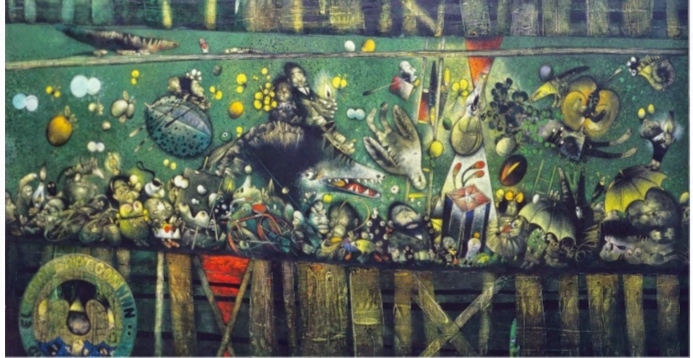
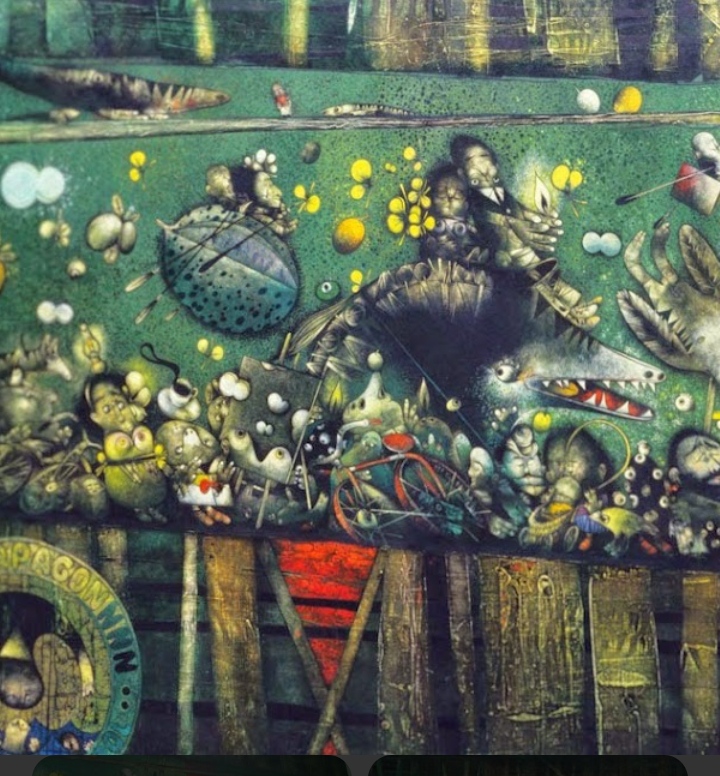
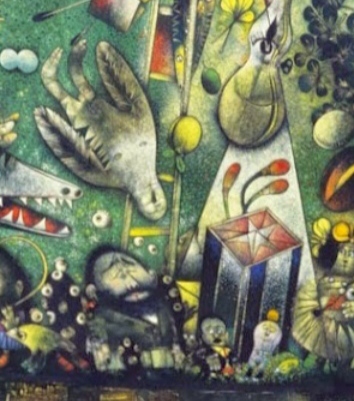
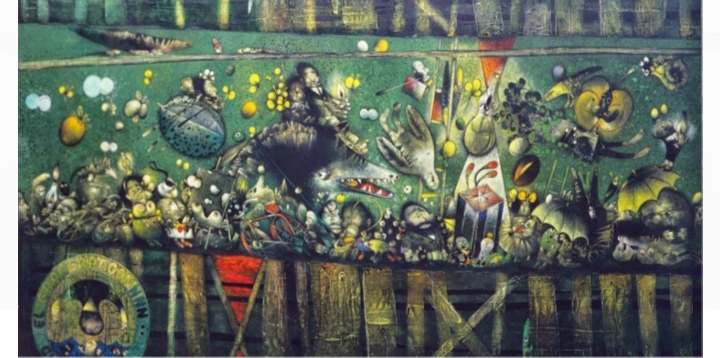
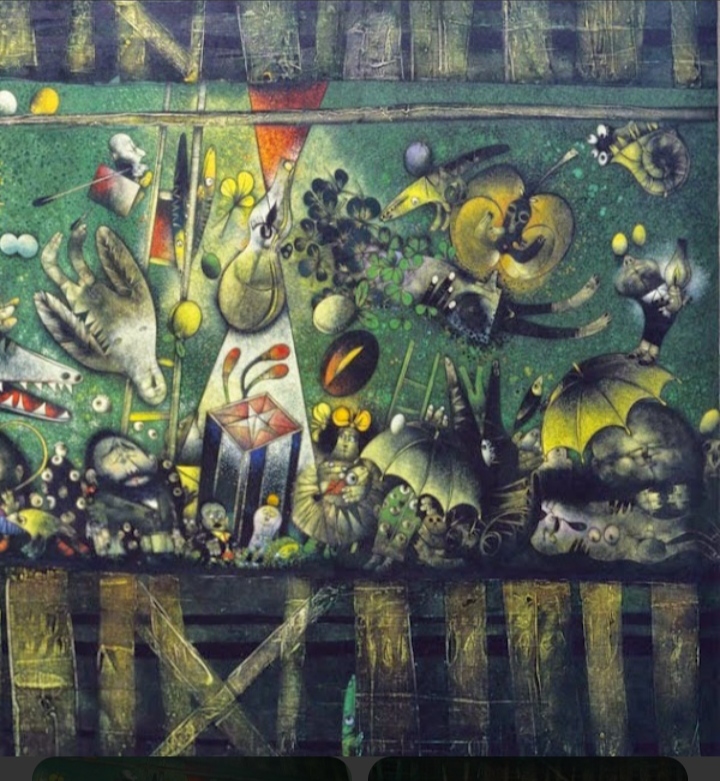
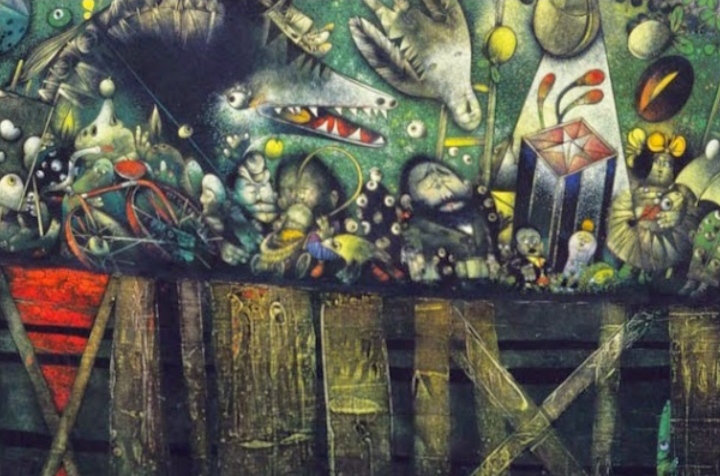
#########################
VERSION IN ENGLISH
Hello friends of this community to which I return for the second time attracted by the possibility of dissertation or theorizing about art.
I know that it is not the same to tell about a creative process step by step of a work, than to express opinions or criteria about a specific work. They are two very different things, and each with its own peculiarities.
Without delaying too much the reason that brings me today, I confess that it is a real challenge to decode a work that because of its transcendence has been called "the Guernica of Pinar del Rio", an issue with which I have differences of opinion, but which I will not address in this post.
The great blackout is the largest easel painting in size painted in these parts and measures 2.98 m high by 5.26 m long; a size typical of a mural painting.
The work was painted in oil on canvas, and it is said that the artist, not having at that time a studio with the necessary conditions, painted it on the floor of a room in his house, unrolling and unrolling the canvas continuously.
The work was done in 1994, in the middle of the "special period", under the continuous scourge of blackouts, which at the same time were excessively prolonged, and we know why.
In this work, which is the most important of a series entitled "Refugios", the painter segments the large canvas into three horizontal sections: the upper and lower sections are treated with linear and abstract elements (recurrent in this series) with which the artist symbolically places the scene in one of the many tunnels that were built at that time to protect the population from possible air attacks in case of an invasion of the country.
The central section is where the whole visual discourse is developed, full of social, political, emotional, sexual allegories and how much feeling or passion is shared in a social context.
The creator proposes a surreal and dreamlike vision of what he considers to be living underground in one of these shelters.
El Gran Apagón is a fabulous big picture in all possible dimensions, a great drawing colored with the pictorial poetry of the master Oliva, where the horror vacui, makes the colorful explosion of this work a scenario of tasty tropical contradictions, where a festive Pandora's box is opened and the subsoil shudders with an apparently chaotic discourse but which is not linear either.
Here doubt, distrust, frustration, exodus and utopia surrender under the effluvia of love riding on the fiercest of times.
The master does not shy away from the encounter with reality and rather than adopting partial positions towards it, he relies on satire, sarcasm and irony through expressive elements to unveil a social crisis that involves everyone equally.
He plays openly with symbols and hierarchy, involves them in the game and pictorial parables and caricatures, poetically, life in a tunnel that still sees a possibility of exit, because although criticism tells us that there everything moves around the light in the center of the shelte
The great blackout of the master of Cuban painting, proudly from Pinar del Río: Pedro Pablo Oliva, is a master class of aesthetics, where the technical and conceptual have the same level of transcendence.
The work declared national patrimony today can be appreciated in the master's studio in the artist's house-workshop in the capital of Pinar del Rio and belongs to the family collection.
It belongs to the family collection, in spite of the interest of the national museum to have it within its patrimony.
Thank you for reading me.
Photos taken from a catalog of the artist, with my Xiaomi Redmi 9a. >Text translated by Deelpp Traslate
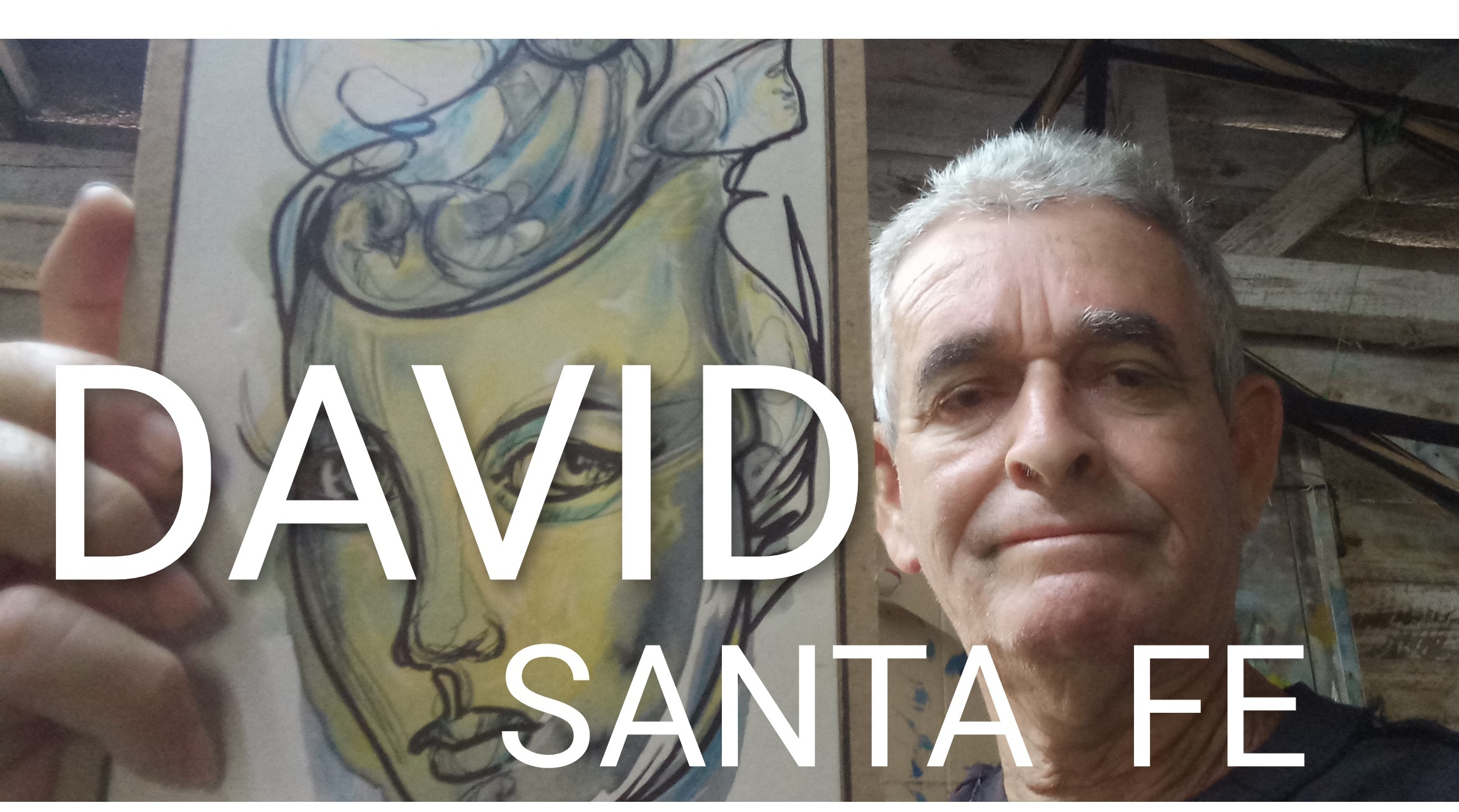
@@@@@@@@@@@@@@@@@@@@@